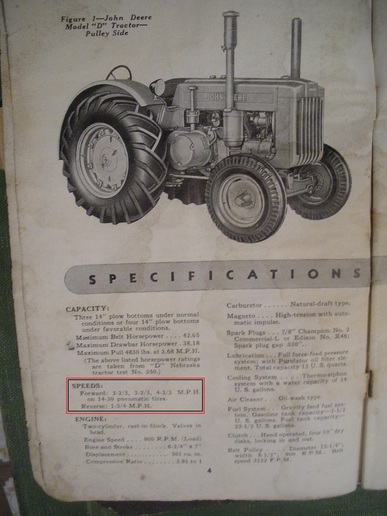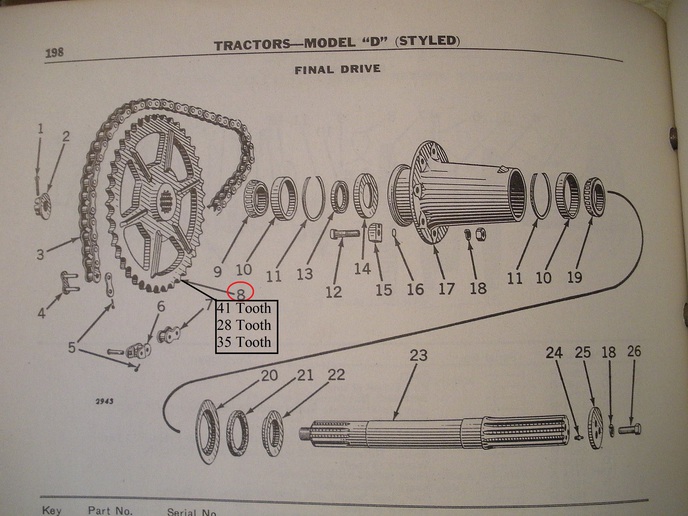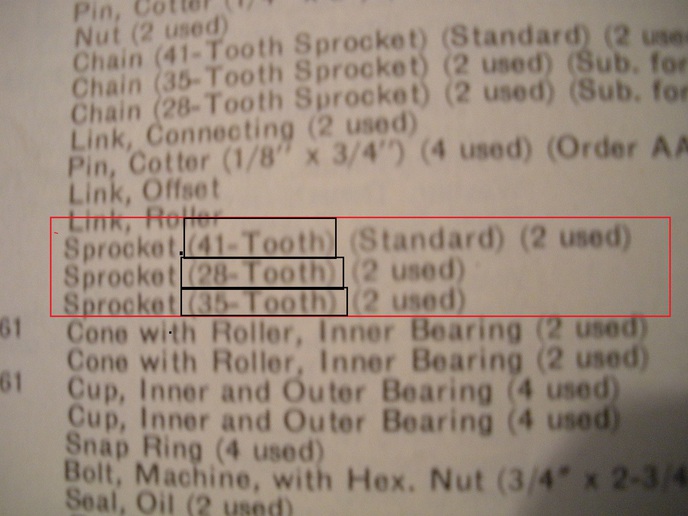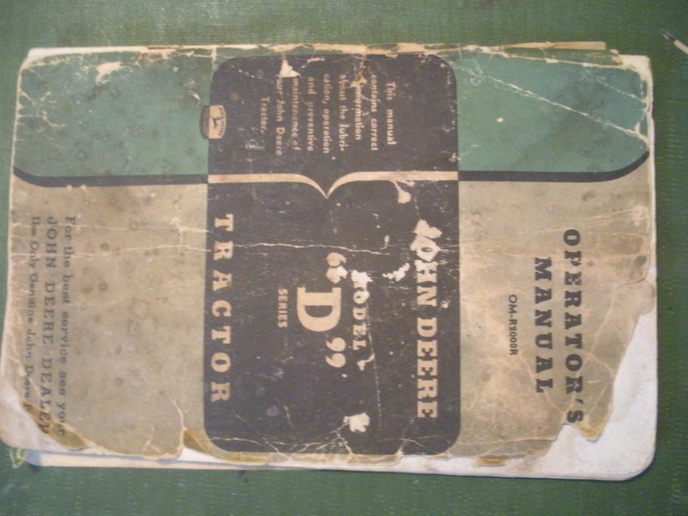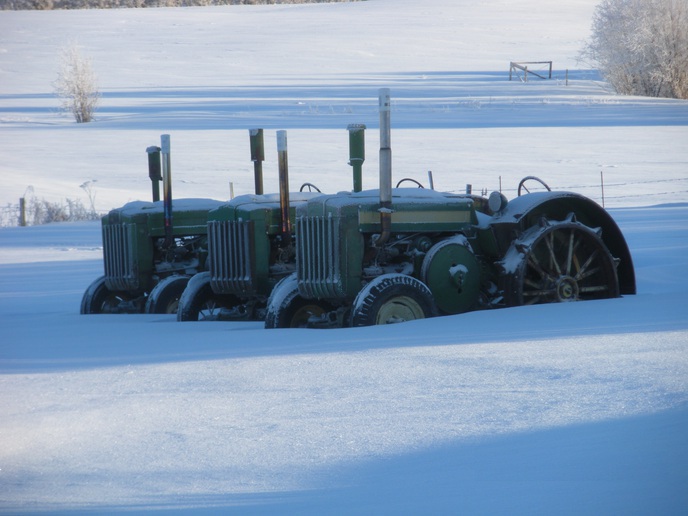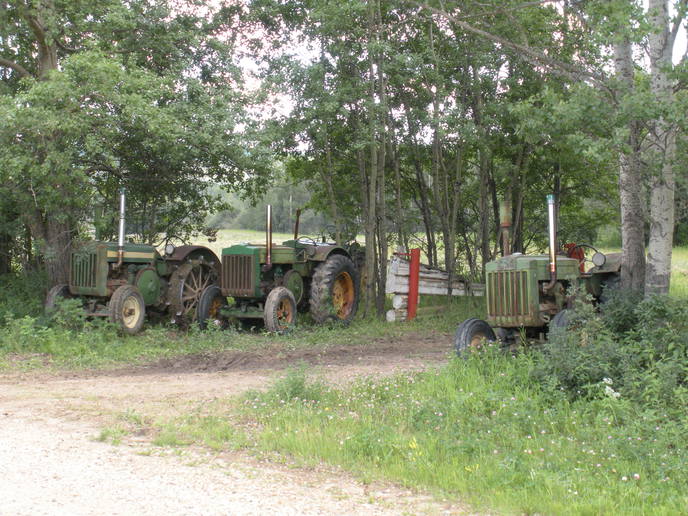Joel Sanderson
Member
I got my John Deere D home Saturday! Very happy here. It's a 1946 with electric start. I'm sure I'll be asking many questions about this old girl as I figure her out, but this is my first one:
The Nebraska Test #350 for the D shows the speeds being 3, 4, and 5 1/4 miles per hour. I got a manual today, and it shows the speeds being 2 2/3, 3 2/3 and 4 2/3 miles per hour. Why is it different than the test? The manual refers to Nebraska Test 350 in the front, so it seems like they should agree. Why would they change to slower speeds? I'd think faster would be more useful, though I have to say that really slow reverse is going to be nice!
Does anyone know what speeds the D's came in over the years and when those speeds were available? Were there different options? I know the 730 came with either a standard or high speed transmission, and the 80 had a creeper gear option. Was it similar for the D?
Thanks for any information you have.
Joel
The Nebraska Test #350 for the D shows the speeds being 3, 4, and 5 1/4 miles per hour. I got a manual today, and it shows the speeds being 2 2/3, 3 2/3 and 4 2/3 miles per hour. Why is it different than the test? The manual refers to Nebraska Test 350 in the front, so it seems like they should agree. Why would they change to slower speeds? I'd think faster would be more useful, though I have to say that really slow reverse is going to be nice!
Does anyone know what speeds the D's came in over the years and when those speeds were available? Were there different options? I know the 730 came with either a standard or high speed transmission, and the 80 had a creeper gear option. Was it similar for the D?
Thanks for any information you have.
Joel


